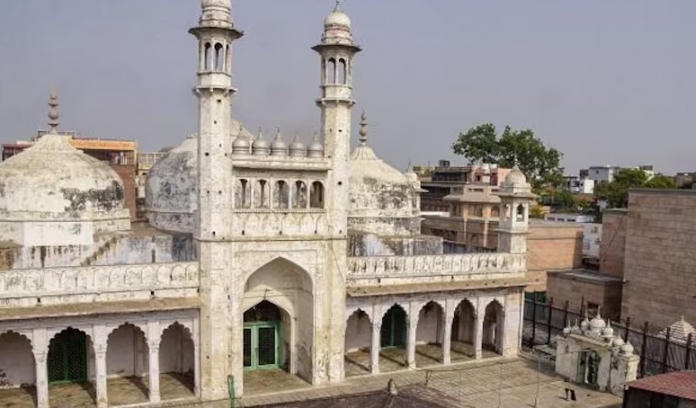In a big win for the Hindu side, Varanasi district court on Wednesday allowed the Hindu side to offer prayers at ‘Vyas Ka Tehkhana’ inside the Gyanvapi Mosque complex. “The District Administration will have to make arrangements within 7 days. Puja will start within seven days. Everyone will have the right to perform Puja,” Hindu side Advocate Vishnu Shankar Jain quoted as saying by news agency ANI. Meanwhile, the Muslim side has decided to challenge the district court verdict in high court.
Earier on Monday, The Hindu side in the Gyanvapi mosque dispute had moved the Supreme Court to de-seal the ‘wazukhana’ area, where a ‘Shivling’ is believed to be located, after the Archaeological Survey of India (ASI) found evidence of a pre-existing Hindu temple in the complex.
The ‘wazukhana’, the place where Muslims perform ablution before offering prayers, was sealed by the Supreme Court in 2022, pending the ASI’s survey of the mosque premises. The Hindu side, represented by advocate Vishnu Shankar Jain, has filed an application to lift the stay order and allow the ASI to conduct another survey in the ‘wazukhana’ area, without damaging the ‘Shivling’.
Jain said that the ASI should be given permission to study the ‘wazukhana’ area, as it would reveal whether it is a fountain or a ‘Shivling’. “I have filed an application in the Supreme Court asking to vacate the stay order given on 19 May 2023. ASI should be allowed to conduct a study and feature study of the ‘Wazukhana’ area. Only, after the study it will be known if it is a fountain or a Shivling…” he said.
The ASI survey of the Gyanvapi mosque complex began on August 4, 2023, after the Allahabad High Court dismissed the petition of the Muslim litigants, who sought a stay on the Varanasi court’s order for a scientific survey by the ASI. The ASI team used ground-penetrating radar and other scientific instruments to examine what lay beneath the surface of the mosque premises. The team also surveyed the inner and outer walls, the cellar and other parts of the complex, except the ‘wazukhana’.
On January 27, 2024, Jain claimed that the ASI report, which is 800 pages long, confirmed that the Gyanvapi mosque was built after destroying a Hindu temple in the 17th century. He said that the report mentioned finding ancient scriptures in Kannada, Devanagari, and Telugu languages inside the mosque premises, which were related to Rudra, Janardan and Vishweshwar. He also said that the pillars of the demolished temple were used to construct the mosque.
The ASI report, which was submitted to the Varanasi court, stated that a pre-existing structure was destroyed in the 17th century, during the reign of Aurangzeb, and “part of it was modified and reused” in the existing structure. The report also said that based on scientific studies, it can be said that there “existed a large Hindu temple prior to the construction of the existing structure.”
The ASI report also said that the “western wall of the existing structure is the remaining part of a pre-existing Hindu temple”. The report cited an Arabic-Persian inscription found inside a room, which said that the mosque was built in the 20th regnal year of Aurangzeb (1676-77 CE).
“Hence, the pre-existing structure appears to have been destroyed in the 17th century, during the reign of Aurangzeb, and part of it was modified and reused in the existing structure. Based on scientific studies/survey carried out, study of architectural remains, exposed features and artefacts, inscriptions, art and sculptures, it can be said that there existed a Hindu temple prior to the construction of the existing structure,” the ASI report said.





